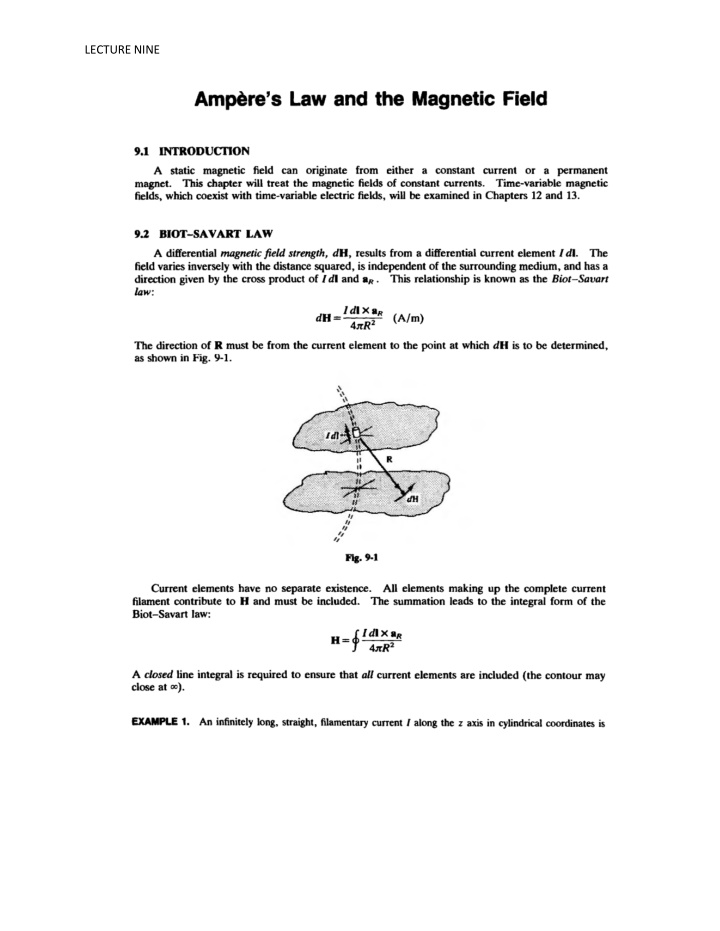
Magnetic Flux Density and Field Strength in Lecture Nine
Explore the concept of magnetic flux density (B) and field strength (H) in Lecture Nine. Learn how these parameters are related, the units used, and how to calculate magnetic flux crossing a surface. Gain insights into the behavior of magnetic flux lines and their comparison with electric flux.
Download Presentation

Please find below an Image/Link to download the presentation.
The content on the website is provided AS IS for your information and personal use only. It may not be sold, licensed, or shared on other websites without obtaining consent from the author. If you encounter any issues during the download, it is possible that the publisher has removed the file from their server.
You are allowed to download the files provided on this website for personal or commercial use, subject to the condition that they are used lawfully. All files are the property of their respective owners.
The content on the website is provided AS IS for your information and personal use only. It may not be sold, licensed, or shared on other websites without obtaining consent from the author.
E N D
Presentation Transcript
LECTURE NINE 9.6 MAGNETIC FLUX DENSITY B LikeD, the magnetic field strength H depends only on (moving) charges and is independent of the medium. The force field associated with H is the mtlgneticflux density B, which is given by B=tJH where 1-'= =1-'oJl, is the permeability of the medium. The unit of B is the tesla, N l T = l - - A m The free-space permeability 1-'o has a numerical value of 4n- x w-1and has the units henries per meter, H/m; IJ,, the relative permeabilily of the medium, is a pure number very near to unity , except for a smaU group of ferromagnetic materials which will be treated in Chapter 11. Magnetic flux, cl>, through a surface is defined as cl>=L B dS The sign on cl>may be positive or negative depending upon tbe choice of the surface normal in dS. The unit of magnetic ftux is the weber, Wb . by 1T =1Wb/m2 The various magnetic units are related 1H=1Wb/A EXAIIW'LE 5. Find the flux crossing the portion of the plane = t/4 defined by 0.01< r< O .OSm and 0< z < 2m (see Fig. 9-6). A current filament of 2.50A along the z axis is in the a. direction. B= J'oH= J'ola lt T CZ,=L2 r0 5 = 21'ollnO.OS 21t =1.61x 10-6Wb or 1.61pWb dS=drdza. - a. drdza. o.oo 2 tr 0.01 It should be observed that the lines of magnetic ftux cl> are closed curves, with no starting point or termination point. This is in contrast with electric ftux 'I'. which originates on positive charge B t 2.SOA
